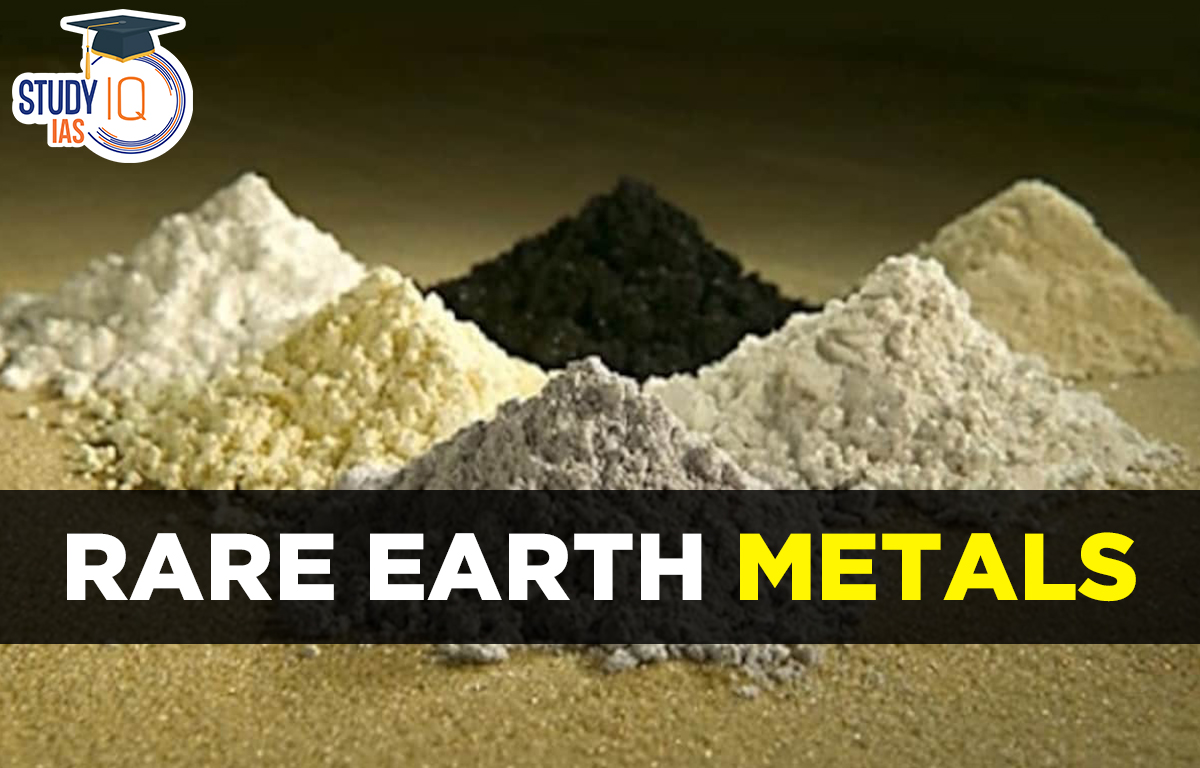Table of Contents
More on Rare Earth Metals
- The discovery is the largest known deposit in Europe.
- Currently, no rare earths are mined in Europe and it mostly imports them from other regions.
- According to a report, 98 per cent of rare earths used by the European Union were sent by China.
- Significance of Discovery: It will reduce their reliance on China for the import of these rare earth elements and other key industrial supplies, especially since the outbreak of the coronavirus pandemic.
- China has misused its monopoly in the rare earths market for furthering its geopolitical agendas.
- Example: In 2010, Beijing blocked Japan’s access to rare earth elements over Tokyo’s detention of a Chinese fishing trawler captain.

About Rare Earth Metals
- Rare Earth Metals are a family of 17 elements in the periodic table, which involve 15 Lanthanides group elements, along with Yttrium and Scandium.
- These elements are not often found in concentrated enough clusters to make them viable to mine. It was the scarcity of these minerals that led to them being called rare earths.
- They were discovered in 18th-19th century, with Yttrium being the first and Promethium the last discovered rare earth element.
- They tend to occur in the same ore deposits as the lanthanides, and have similar chemical properties.
- One of the rare earths, promethium, is radioactive.
- Type of Rare Earth Metals: Elements are divided into two forms:
- Light rare earth elements are uncritical as they are abundantly available.
- Heavy rare earth elements are more critical due to their high demand and less availability.
Significance of Rare Earth Metal
- Most Newer Age Development: Important in technologies of consumer electronics, computers and networks, communications, clean energy, advanced transportation, healthcare, environmental mitigation, and national defence. Applications are:
- Scandium is used in televisions and fluorescent lamps.
- Yttrium is used in drugs to treat rheumatoid arthritis and cancer.
- Cerium, the most abundant rare earth element, is essential to NASA’s Space Shuttle Programme.
- Green energy: Elements like neodymium and dysprosium, which are used in wind turbine motors.
- Electric Vehicles: Switching from internal combustion cars to electric vehicles has led to a rise in demand for rare earth magnets (made from neodymium, boron, and iron) and batteries.
India and Rare Earth Element
- India has a reservoir of 49 major critical and non-fuel minerals.
- India is 100 per cent import dependent for its rare earth supplies, despite having a rich deposit of monazite on beach sand.
- Reason: Mining being restricted to public sector undertakings (PSUs), particularly, the Indian Rare Earth Limited (IREL) and Kerala REL.

Minerals Security Partnership (MSP)
- Aim: Catalysing investment from governments and the private sector to develop strategic opportunities.
- Focus: Supply chains of minerals such as Cobalt, Nickel, Lithium, and also the 17 ‘rare earth’ minerals.
- Members: US, Australia, Canada, Finland, France, Germany, Japan, the Republic of Korea (South Korea), Sweden, the United Kingdom, and the European Commission.


 Serious Fraud Investigation Office (SFIO...
Serious Fraud Investigation Office (SFIO...
 Article 142 of Indian Constitution, Sign...
Article 142 of Indian Constitution, Sign...
 Pakistan-Occupied Kashmir (PoK): History...
Pakistan-Occupied Kashmir (PoK): History...





















